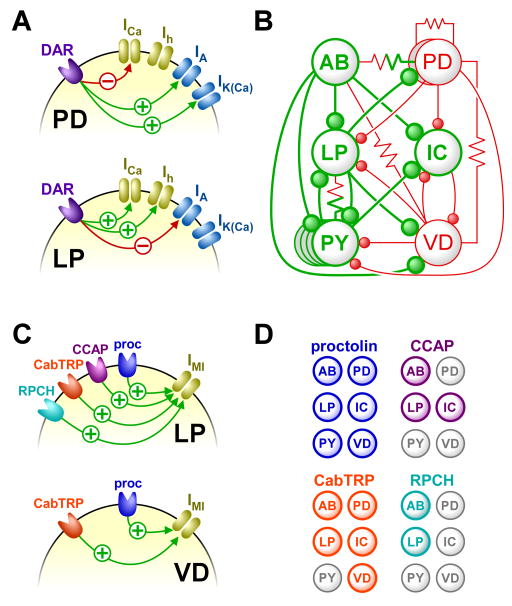Figure 2.
Different organizing principles underlying circuit modulation by biogenic amines and neuropeptides. A: In different cell types, activation of dopamine receptors (DAR) can affect the gating properties of different subsets of ion channels, and the effects can have a different sign. Ion channels giving rise to inward currents are shown in yellow, and those giving rise to outward currents in blue. B: The sum effects of the diverse cellular loci of dopamine actions are functional enhancements (green) or recuctions (red) of excitability in all pyloric neurons and strength of all pyloric synapses. C: Neuropeptide modulation affects a limited number of intracellular targets. Different neuropeptides all converge on the same voltage-gated inward current (IMI), but different cell types respond to a different subset of neuropeptides. RPCH: red pigment concentrating hormone; CabTRP: Cancer borealis tachykinin-related peptide; CCAP: crustacean cardioactive peptide; proc: proctolin. D: Despite the convergence of neuropeptide effects on the same subcellular target, the different subsets of circuit neurons affected by each neuropetide give rise to divergent effects on circuit activity. A & B are modified from reference [16], C & D are modified from references [27] and [32].

